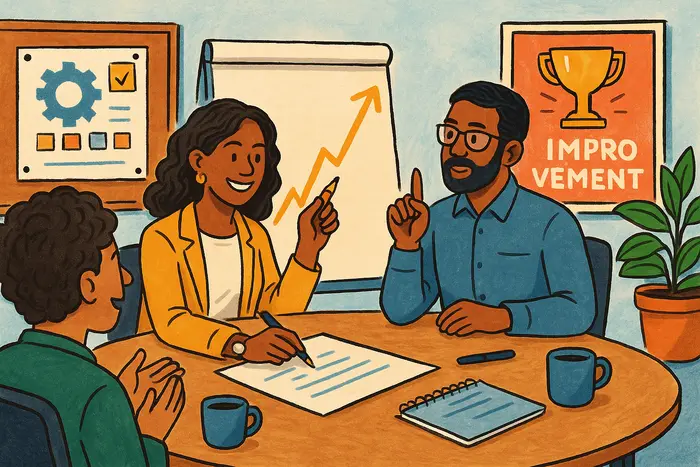Every team says they want to improve. But turning that desire into a daily habit? That takes culture.
A culture of continuous improvement means your people are always looking for ways to do things better—without needing a big initiative or a top-down mandate.
In this post, we’ll break down how to build that kind of culture step by step.
What Is a Culture of Continuous Improvement?
It’s an environment where improvement isn’t a one-time project—it’s how you work every day. Teams:
- Regularly spot and solve small problems
- Suggest and test better ways to do things
- Learn from mistakes instead of hiding them
- Celebrate progress, not just perfection
Why It Matters
- Improves efficiency without big overhauls
- Engages employees who feel empowered to make a difference
- Builds resilience by adapting quickly to change
- Drives innovation from the ground up
Step-by-Step: How to Build the Culture
Step 1: Start with Leadership
Culture starts at the top. Leaders must:
- Model curiosity and openness to feedback
- Share their own lessons and changes
- Celebrate team-driven improvements
If leaders don’t live it, no one else will.
Step 2: Make It Safe to Speak Up
Create psychological safety by:
- Welcoming questions and ideas
- Responding with interest, not defensiveness
- Treating mistakes as learning moments
People improve what they feel safe talking about.
Step 3: Build It Into Daily Work
Don’t make improvement an “extra.” Make it part of how work gets done:
- Start meetings with “What’s one thing we could do better?”
- Use short reflection routines (e.g., after projects or busy weeks)
- Give time and permission to experiment
Step 4: Track and Share Small Wins
What gets noticed gets repeated:
- Keep a visible “improvement wall” or log
- Share before-and-after stories
- Highlight improvements in team meetings
This reinforces progress and creates momentum.
Step 5: Give People Tools and Frameworks
Teach basic techniques:
- 5 Whys for root cause analysis
- PDCA (Plan-Do-Check-Act) cycles
- Standard work documentation
You don’t need complex systems—just consistent habits.
Step 6: Recognize and Reward the Behavior
Reward effort, not just results:
- Publicly thank those who share ideas
- Include improvement in performance reviews
- Give small perks or shoutouts for trying new things
Pro Tips
- Focus on process, not blame
- Keep changes small and testable
- Let teams own their improvements
- Avoid improvement “fatigue” by celebrating progress
Summary: Small Steps, Every Day
Creating a culture of continuous improvement doesn’t require a massive shift—it requires consistent encouragement, support, and visibility.
Start with one habit. One conversation. One idea.
When improvement becomes part of how your team works, the results follow naturally.
